The Huawei P8 Lite Review
by Brandon Chester on July 27, 2015 8:00 AM EST- Posted in
- Smartphones
- Huawei
- Mobile
System Performance
The P8 Lite is the first device with Qualcomm's Snapdragon 615 that we've reviewed. The Snapdragon 615 implementation in the P8 lite has two clusters with 4 Cortex A53 cores. With this bin the first cluster has a peak frequency of 1.5GHz, while the second has a peak frequency of 1.11GHz. This is slightly slower than the 1.7GHz implementation in the HTC One M8s, but it still represents a 25% improvement in clock speeds on the big cluster over Snapdragon 410. In theory since there's support for HMP the OS could schedule threads to use all 8 cores at once, but in essentially every user workload it will act as a quad core Cortex A53 CPU.
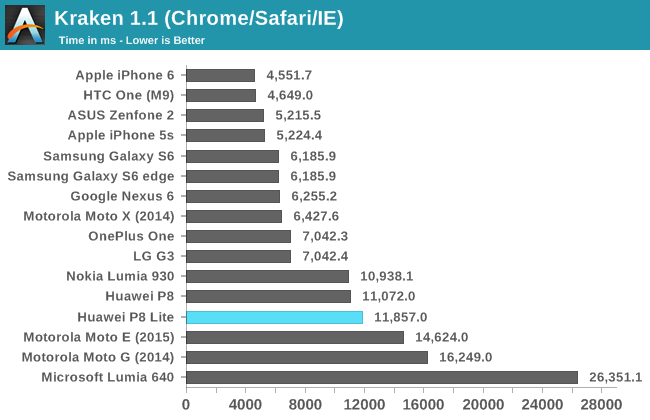
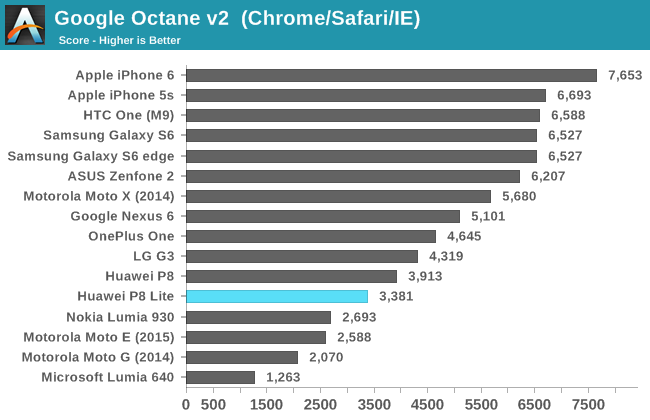

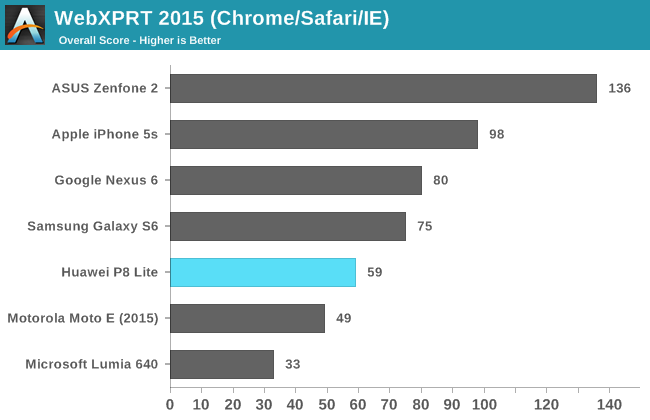
The P8 Lite shows good improvement over devices that use Qualcomm's Snapdragon 400 and 410 SoCs. In both versions of WebXPRT and in Mozilla Kraken we see improvements of about 20%, with Google Octane improving by over 30%. This is in line with what one would expect from the 25% clock speed improvement on the big cluster when compared to Snapdragon 410.
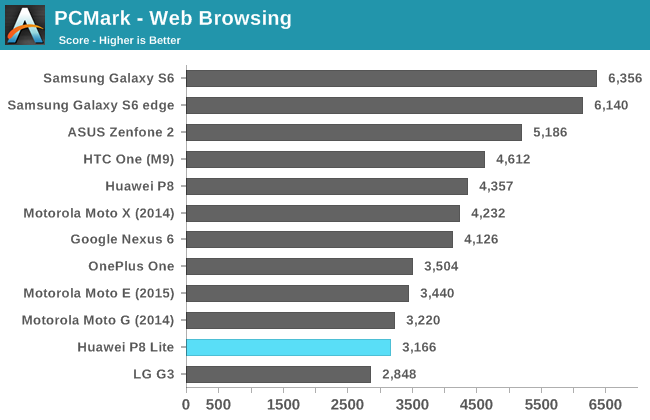
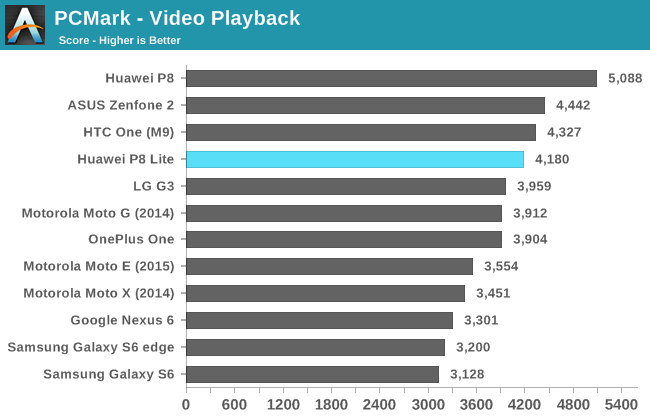
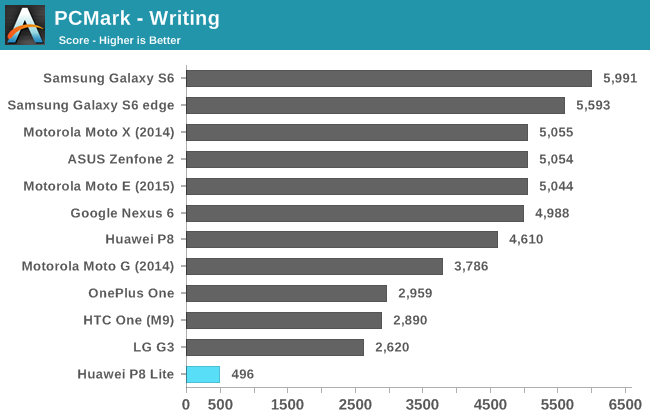
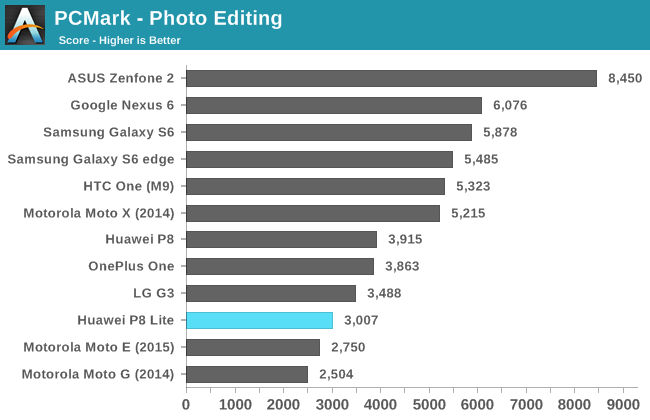
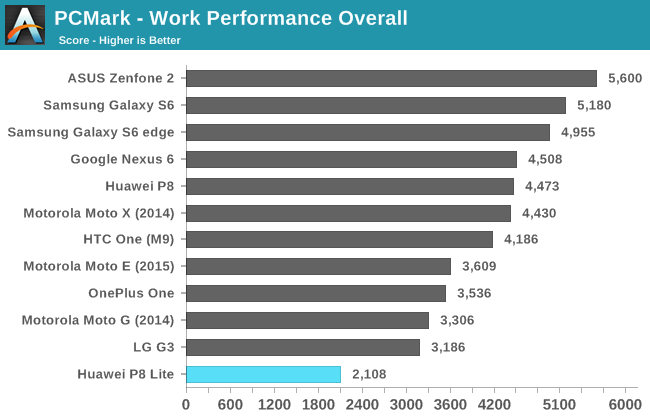
PCMark is a benchmark that focuses more on real-world scenarios where race to sleep speed is paramount, but the user workload also increases with faster CPUs. Software can also be as important to the test as hardware, and we've seen gains on devices running Android Lollipop over those running KitKat. In it we see that the Huawei P8 Lite doesn't do very well overall. The main cause of this is its score in the writing sub test. This is not a new situation for Huawei, as all of their KitKat devices score somewhere around 500 points in that test due to problems with Dalvik. If that test were to be removed, the P8 Lite would perform slightly better overall than the Moto E. Ultimately the result in PCMark is just an example of how performance is hardly software agnostic, and demonstrates why devices should not be launching with KitKat this far into 2015.
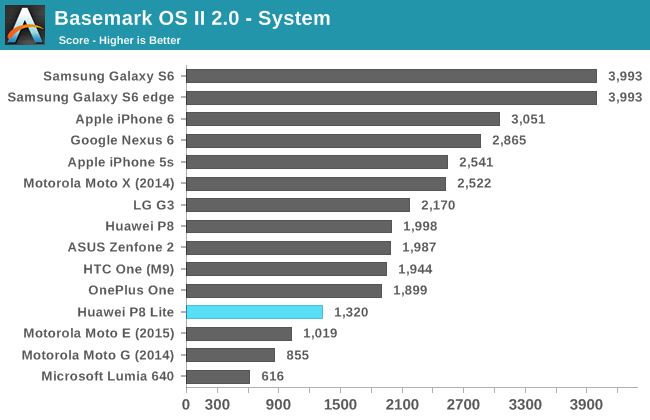
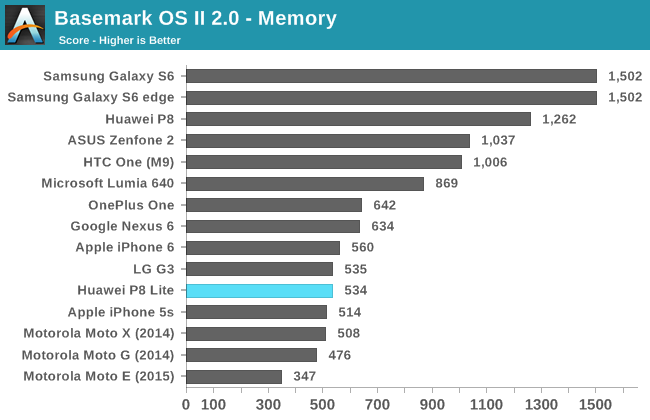
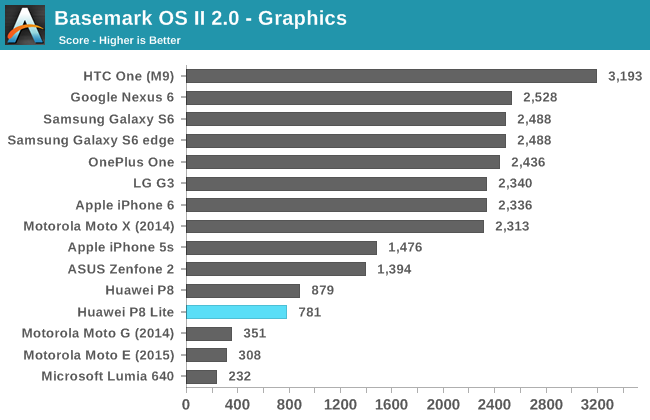
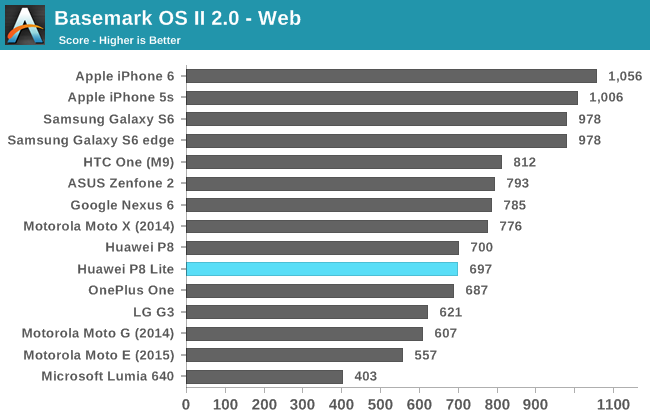
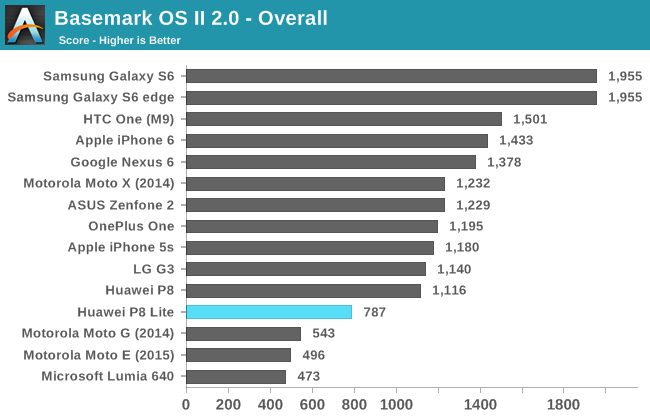
In BaseMark OS II we again see the P8 Lite holding a lead over Snapdragon 400 and 410 devices, with the largest improvement being in the graphics sub test.
Overall the P8 Lite shows significant improvements over the performance of lower end Snapdragon 400 and 410 based devices. CPU improvements are right in line with the 25% greater clock speed than Snapdragon 410 on the big cluster of Cortex A53 cores, and BaseMark OS II shows us that there are substantial GPU improvements which will be detailed on the next page.










45 Comments
View All Comments
joeroyhud - Monday, July 27, 2015 - link
The P8 Lite supports LTE band 12, which makes it attractive if you're a T-Mobile customer like I am. I got the phone on sale a couple months ago for $200. I like the size and the performance and the battery life, but it's overpriced at $250.Glock24 - Monday, July 27, 2015 - link
This phone seems like a bad choice. Glad I got a ZenFone 2, but sure since I got the 4GB RAM/64GB flash version it cost me $300. Battery life on ZF2 is not great, but has improved a bit with system updates. I guess if the P8 Lite had Android 5.0 it would have even worse battery life.austinsguitar - Monday, July 27, 2015 - link
g4 pleaseedwd2 - Monday, July 27, 2015 - link
SD615 is a plain no for me. It's arguably worse than the SD600 and the MT6752 smokes it in every aspect at a lower price point.Speedfriend - Tuesday, July 28, 2015 - link
"As for performance, Snapdragon 615 is really the best you're going to get at this price point unless you go with the Zenfone 2 which is something of an anomaly in many ways. "Which begs the question why more manufacturers aren't using Intel chips which clearly smash the performance of any other mid range priced offerings?
Stick an Intel chip in a Moto G and I'll buy that!
LiverpoolFC5903 - Tuesday, July 28, 2015 - link
Agree, I dont understand why more manufacturers do not use the newer Silvermont based Intel chips, considering the performance levels and the low price. Much better than using mediocre socs like Snapdragon 410/615 at similar price points. Having used the ZF2, I can personally attest to its performance in handling anything Android has to offer.Buk Lau - Wednesday, July 29, 2015 - link
The answer is simple, Intel chips don't come with integrated modems. just look at zenfone 2, that thing comes with XMM 7262 with CAT 6 LTE disabled, and if this doesn't show you the problem already, Qualcomm's Gobi modem even comes with integrated GPS solution whereas Asus has to include a Broadcom solution. so just by using these atoms you already have to include 2 other chips whereas Qualcomm just gives you an all-in-one solution. then the choice is obvious, unless intel is literally paying money to you, which they did, what incentive is there for you to use their more complicated solution instead of qualcomm's? and this is how qualcomm got to become what it is today. back in the old days qualcomm's SoCs suffered even worse overheating and performance and yet OEMs still persist to use their stuff, simply because they offered an integrated modem. in a sense, OEMs only have themselves to blame rather than qualcomm for having to release junk phones all over this year, if they didn't spoil qualcomm so much back then, there wouldn't be so little choices in the SoC marketBadelhas - Tuesday, July 28, 2015 - link
The European / Asian version has Lollipop UI Emotion 3.1 and the their own HiSilicon's Kirin 620 SoC. Is it possible to review that one? Seems much better than the American version...A friend of mine bought one and it´s pretty slick, even if I continue to prefer the Moto E, considering the price.
PrinceGaz - Tuesday, July 28, 2015 - link
eww, you've got really hairy arms! (just joking, there were complaints in the comments about the iWatch that the guy wearing it had hairless arms :)So why would I want a phone with eight A53 CPUs? In my experience with a quad-core tablet, it rarely uses more than two of them fully when it is running at full speed, with the third and fourth cores doing a bit of work but hardly ever even approaching fully utilised (probably just running the tasks that need to be run anyway, so their main purpose is taking a tiny bit of work off the other cores).
Given that a 64-bit CPU is a bit unnecessary when phones have yet to reach 4GB RAM, and probably counter-productive power-wise as a result (just look at A15/A7 vs A57/A53), whilst benchmarks may run faster on a quad-core 1.5GHz A53, I suspect I'm better off with my old dual-core 1.7GHz Krait for most daily usage. It lasts me all day and never feels slow, and most of the time (according to a CPU usage monitor) one of the cores isn't being used much. I don't play 3D games much on my phone; so I never tax the GPU, therefore the Adreno 305 is perfectly fine for me,
What workload other than benchmarks requires more than two CPU cores? The main one that occurs to me is a browser, in which case you would be much better off culling battery draining processes rather than running them.
Ethos Evoss - Saturday, August 1, 2015 - link
pls honor 7 reviewthnx